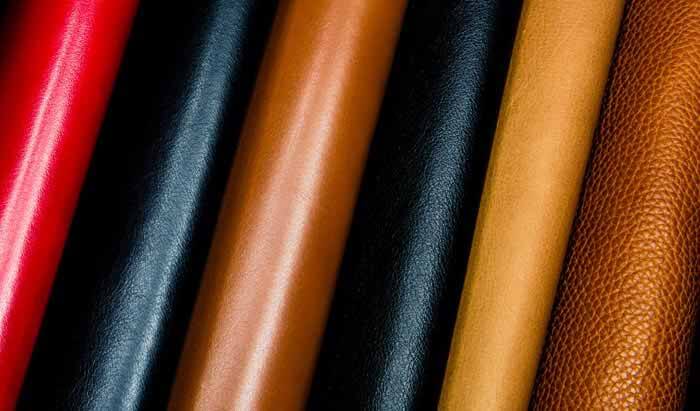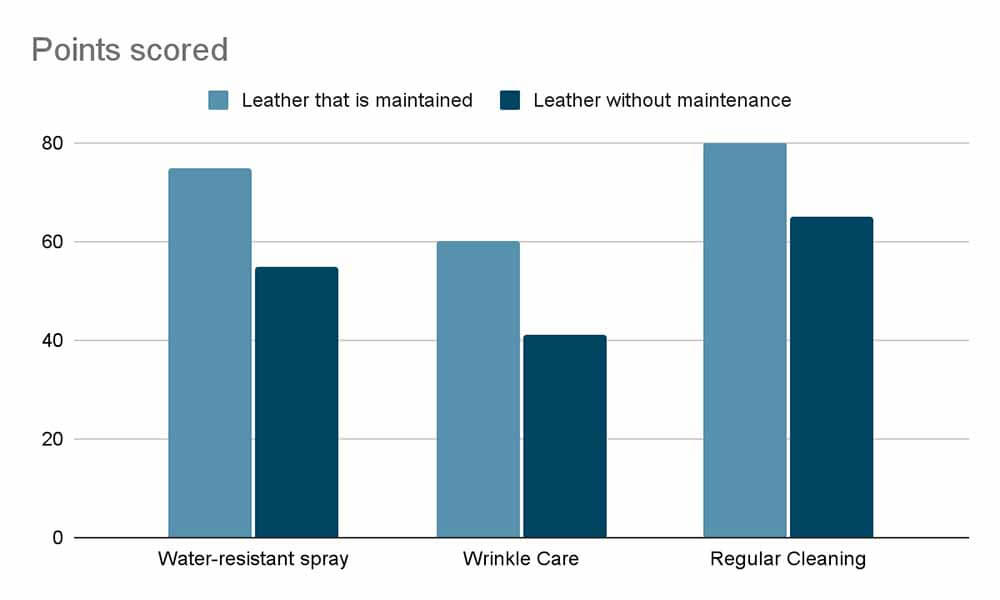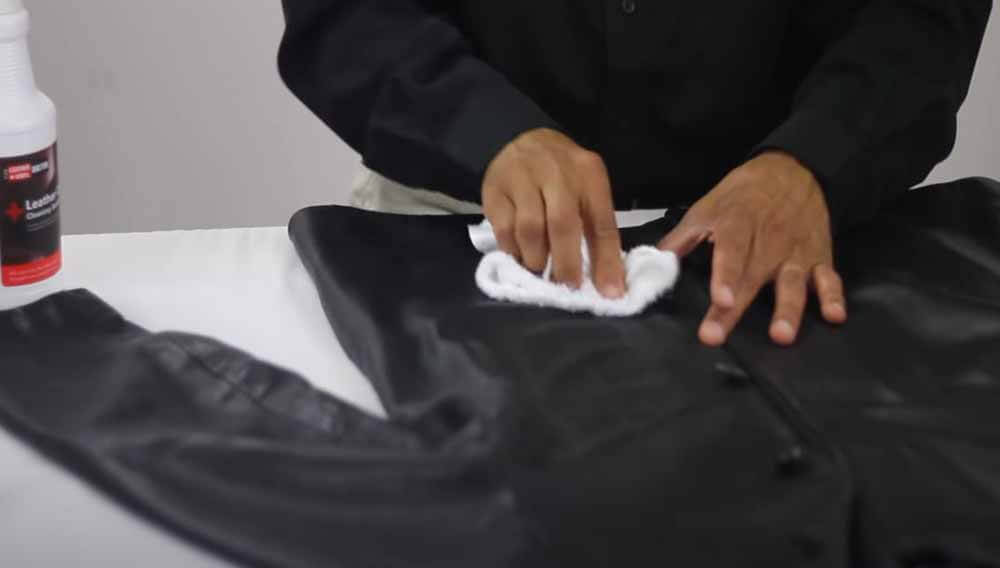For most bikers, the most important factor to consider when purchasing a motorbike leather gear is its durability. After all, you’ve just spent hundreds of dollars on high-quality leather, and you’d like to get as much usage out of it as possible. Which highlights the main question here – “How long do motorcycle leathers last?”
How Long Do Motorcycle Leathers Last? Beyond 15 years and by cleaning, conditioning them, regularly and removing dirt & grime they can last more than 30 years. Motorcycle leathers generally between 10 to 15 years with normal use and if not crashed in. But if you take the necessary steps to care for your motorcycle race leathers, they can last well beyond 30 years.
You can extend the life of the leather motorcycle on your leather race suit or leather motorcycle jacket by treating them with a water-resistant spray and quality leather conditioners. It is important to get the natural oils back into the leather by using proper leather conditioners developed for this purpose Motorcycle leather whether in a jacket or in a set of leathers for racing must be replaced once the wear and tear become visible or it becomes too dry and rigid.
The Lifespan of Motorcycle Leather

Motorcycle gear is a long-term investment for bikers that will pay off in their future adventures. For a long time, motorcycle riders have preferred leather over other materials. Below are the two main reasons for that:
- It’s a tough, abrasion-resistant material that can withstand tearing.
- It adjusts to the shape of the rider’s body over time, making it comfortable to wear for extended periods of time.
Motorcycle leather is a worthwhile investment if the owner can ensure to take good care of it. However, to do so, you first need to learn about what affects your leather gear’s lifespan. The three important factors that determine how long motorcycle leathers last are:
1. Quality of Leather
The quality of the leather isn’t exactly a factor that affects its lifespan, but it is an initial factor that must be considered before purchasing the gear. Leather can come in a variety of qualities starting from cheap, low-quality leather to the best quality leather. It isn’t always true that cheap is low quality, but it does wear out sooner than high-quality ones.
Motorcycle leathers are available in a variety of styles and sizes. You’ll want to choose a style and size that is both comfortable and provides the necessary protection while riding. There are various sorts of leather to choose from, so you’ll be able to select the perfect pair of motorbike leather for your needs.
2. Frequency of Use
How long do motorcycle leathers last well that depends largely on how much use they get, how many hours you are in the suit, Frequency of use is a factor that affects your leather’s lifespan. The longevity of motorcycle leather is correlated to the amount of use and exposure to the environmental conditions like rain and sun. Daily or frequent use of motorcycle gear will generally require high-quality leather for durability. If you use your motorcycle gear rarely, then an affordable range of gear will suffice, rather than buying an extremely expensive one.
Let’s take a quick look at the pros and cons of using leather gear:
| Pros: | Cons: |
|
|
3. Maintenance
How you treat your leather gear has a direct impact on its longevity. If properly cleaned and maintained, then the motorcycle leather can last up to 20 years as well. The maintenance process will differ according to the material of the product and the weather conditions of your area.
The graph below represents the quality of leather with and without maintenance methods on the X-axis and its durability (%) on the Y-axis.
The graph indicates that leather tends to last longer when the proper measures are taken to maintain its integrity and make it last longer.
Spraying water-resistant spray makes the leather last longer because, without it, water will seep inside the fabric and make it lose.
Learning how to remove wrinkles from leather gear will help reduce wear and tear and keep the gear stylish for a longer time. Cleaning the leather to remove dirt and grime helps prevent dry spots and fractures as a result of the salt deposit.
How Long Do Motorcycle Leathers Last? Well, That Depends on How Well You Take Care of them.
How To Make Your Motorcycle Leather Last
Now that you know what affects the lifespan of your leather gear, it is time to learn what you can do to ensure it lasts and serves you for as long as possible.
Leather is a classy, stylish, and comfortable material, but caring for it doesn’t have to be difficult. Take some time to understand how to manage your leather jackets, whether they are protective motorcycle leather jackets or stylish leather boots.
How to Maintain Motorcycle Leather
1. Make Your Leather Resistant to Water
There are various “leather protection” or “leather waterproofing” products on the market, but before you buy, check the label carefully. Your leather’s appearance and gloss should be preserved with a silicone polymer spray or an acrylic copolymer spray.
Products that are based on grease or wax are more protective. Check your product’s label to see how long the water resistance will last. While this technique will make the leather jacket water-resistant, it will not make it completely waterproof, despite what the treatment promises. Never put a leather jacket in the washing machine or submerge it in water.
2. Use Leather Conditioner Occasionally
Rubbing the jacket or boots in a leather conditioner restores oil in the fabric, reducing the dryness and peeling, but too much oil can clog pores and impair the color and longevity of the jacket.
Here are some things that you should consider while selecting a leather conditioner:
- Check the label to confirm if the conditioner will work with the leather. This is especially important for suede and nubuck jackets.
- Seal all the hard-wearing leather. You can use Dubbin for this. It’s a blended mixture of oils, waxes, and tallows. Using Dubbin will help you clean and nurture the leather as well.
- Avoid certain chemicals. You should refrain from using products that contain mineral oil or are petroleum-based. These products can cause serious damage to the leather.
- Consider water-resistant coating. If you want to use “saddle soap” to pull the dirt and stains out of the grooves of leather jackets and boots, ensure that your leather has been treated with a water-resistant coating. Unfinished leather will be damaged by the use of saddle soap.
3. Polish Smooth Leather Jackets
On rare occasions, polish smooth leather coats. Leather polish will give your jacket a lustrous sheen, but it has the tendency to discolor, dry out, or clog the leather. Use this for special events, and always try to test out new products before using them.
Buff with a towel until a shiny finish is achieved. Suede and other leathers with a soft, fuzzy texture should not be polished. It is impossible to make suede shiny without eliminating the texture permanently. Even if the shoe polish is labeled for leather shoes, don’t use it.
4. Using a Moist Towel, Wipe Away Salt Deposits
White salt deposits can build on leather in wet winter circumstances. To avoid dry spots and fractures, wipe off the salt with a damp cloth as soon as possible. Allow for air drying before applying the conditioner to the affected region.
5. Allow Wet Leather to Dry Naturally
If your leather jacket and boots get wet, hang them up on a hanger, wipe them down, and let air dry. To avoid stretching the damp leather, remove anything from pockets and keep it away from a direct source of heat like radiators. If the leather has become completely soaked, use the conditioner after drying.
6. Find Out How to Get Rid of Wrinkles
Minor creases can be avoided and removed by hanging the gear on a clothes hanger. If the gear has a lot of creases, it’s best to take it to a professional leather cleaner. Set a clothes iron to the lowest setting (typically labeled “rayon”), place the leather under a towel, and swiftly iron the fabric.
Cleaning Motorcycle Leather Gear
Cleaning motorcycle leather gear regularly will help prevent wear and tear and elongate its lifespan. It is best to clean the gear after every 15 to 20 days of use.
Follow the Instructions on the Tag
Almost every leather jacket or boot sold in a store comes with a tag that explains how to clean it. Since there are many different types of leather, it’s best to stick to the label’s particular guidelines wherever feasible. The techniques outlined below are generally safe if followed carefully, but no approach can guarantee that it will work on all types of leather.
Use a Soft Brush or Cloth to Lightly Dust the Jacket
It’s possible that your leather gear needs to be dusted if it’s been sitting in the closet for a long time. Use a dry piece of cloth or camel hairbrush to avoid scuffing or harming the leather.
The Liner Should be Removed and Washed
Most leathers now come with a detachable air-mesh liner that makes fitting into and out of your leathers a breeze. If this is the case, remove it from the bag and wash it according to the manufacturer’s instructions.
The majority of lining suits are anti-microbial, so as long as they are allowed to air dry, they should not stink. However, if necessary, put these in the washer before moving on to the leathers.
Get The Bugs Off
Bugs, exhaust fumes, and rubber can all get into your leather and cause damage to the upper protective layer. It’s a thin polyurethane skin that goes over the outside of the material to keep water, dirt, and grease out of the fibers. The interior fiber of the leather can be broken down and the suit’s protection is hampered if this layer becomes excessively damaged by a bug left on the suit for too long.
To get rid of the bugs, give the leather gear a brisk wipe with a leather cleaning wipe. This is only to get rid of any bugs that haven’t entirely baked into the leather’s surface.
1. Rub the Grime with an Art Gum Eraser
This procedure works well on suede, but other leathers should be tested first… To remove dirt or new ink stains from a suede jacket, brush the art gum eraser over the filthy or dirty region. If any eraser residue remains on the jacket, use a gentle vacuum cleaner to remove it.
This sort of eraser is also known as an “artist’s eraser” and can be found in craft stores. It’s a putty-like material that crumbles when you use it. It’s not to be confused with “kneaded erasers,” which have a similar appearance but don’t crumble.
You can also use wipes to clean the grime on the jacket. The wipes are really useful since they prevent you from over-applying the cleaning product to the leather, preventing muck from clogging the pores on the zips.
Work your way into each panel of leathers, moving from one to another in a systematic manner. If there is any stubborn area on the jacket, try not to press too hard.
Precautionary measure: Drop a single drop of water onto your jacket and see how it reacts. If the water remains on the surface, a little damp cloth can be used to wipe dirt from the leather. If the water absorbs into the leather and darkens it, don’t use it again.
2. Do’s and Don’ts for Cleaning Motorcycle Leather
Do’s:
- Use leather-cleaning products designed for this purpose only.
- Start cleaning with a small amount of cleaning liquid and work your way up.
- Zips, vents, and stitching should all be handled with caution.
- Allow time for the previous product to dry before adding the next.
- Apply a small amount of pressure.
- Please take your time cleaning the leather.
Don’ts:
- Use chemical cleaners that aren’t designed for leather.
- Use revolving brushes or washing machines as mechanical devices as harsh on the leather.
- Don’t do too much cleaning on the leather.
- Clog the jacket stitching.
- Scrub too harshly.
- Knowing all of the things to do to properly care for your leathers and also what not to do will answer the question “How Long Do Motorcycle Leathers Last”
How Long Do Motorcycle Leathers Last and When Should Motorcycle Apparel & Gear Be Replaced?
Motorcycle gear usually lasts for over 15 years with normal care. However, will good care they can last 24, even 30 years. You will need to replace it after the wear and tear are visible or the leather becomes dry and rigid.
1. When to Replace Motorcycle Jackets
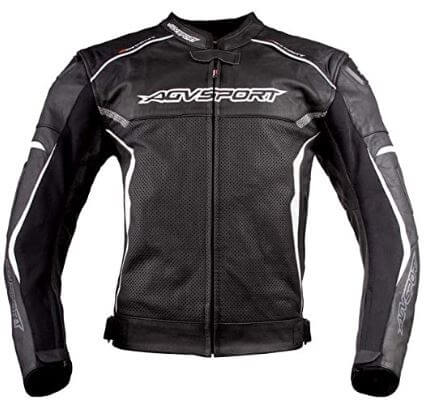
Motorcycle jackets usually last up to 10 or 15 years under ideal conditions, but how can you know when it’s time to replace yours?
Motorcycle jackets, in fact, include a number of components that may be replaced or repaired independently, such as velcro, zippers, and armors. You should consider if you should replace the complete jacket or only the damaged areas.
When determining whether or not to replace your motorcycle jackets, consider the following points.
- Accidents: Accidents are the most common cause of motorbike jacket damage. If there’s a substantial tear in the fabric or armor, you’ll need to replace the jacket.
- Components are broken: If any of the components, such as the velcro, button, or zip, stop working, you should consider replacing them. Or, at the very least, have the separate components repaired. These fasteners are necessary for protection to stay in place.
- Armor is worn out: When a jacket’s armor is no longer springy and have a lot of creases, it’s time to replace them. This indicates that the armor has worn out and is no longer effective.
- Discoloration: It’s an indication that you’ve owned your jacket for too long if it’s discolored (becomes pale). It’s possible that the materials are no longer as sturdy as they once were, and it’s time to replace them.
- Reflective components have worn out: Jackets with reflective components do not last as long as the jacket itself. They are, however, crucial. When these reflective components become less reflective, they should be replaced.
- The jacket is leaking: If a jacket was formerly waterproof but is now no longer resisting water, it should be changed. Water leaking from a waterproof jacket indicates that the materials inside are broken. For added protection, it’s best to replace the leather jacket.
All these conditions call for either complete replacement or repair of your motorcycle leather jacket.
2. When to Replace Motorcycle Helmets?
A motorcycle helmet is one of the most durable items you’ll purchase, so you won’t need to replace it for at least five years.
This five-year threshold now excludes windshield cracks and the dome portion, which reveals the layers underlying the surface. It just takes into account sweat and the deterioration of cushion glue. If a part of your helmet is broken, you must replace it immediately, regardless of how old it is.
A helmet crack normally occurs as a result of a serious motorcycle accident, rather than because you dropped it. If the helmet breaks after you drop it, it is substandard, and you should contact the manufacturer immediately… It is worth investing in a good quality helmet because it will pay off in the long run.
3. When to Replace Motorcycle Gloves?
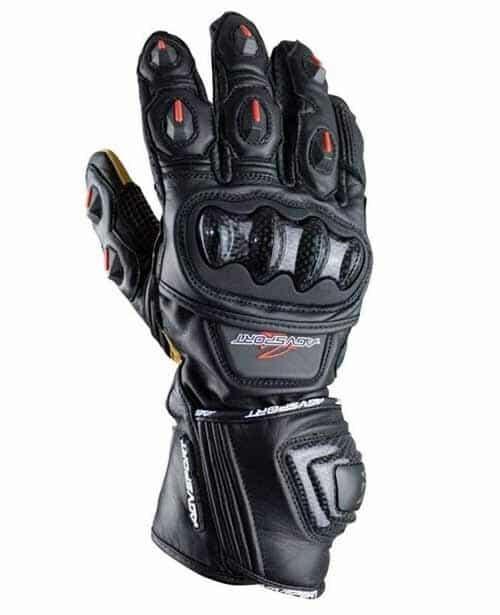
Gloves wear out over time since they are constantly in contact with handlebars and other surfaces. Gloves typically last approximately 20k miles or over two years. A common sign that a glove is degrading is that the groves and bumps level out, nearly as if they were rubbed down.
If you need a new pair of gloves, motorcycle riding gloves should be your first choice. These gloves provide traction and grip on the palms, making it easier to control the bars of a motorcycle. You won’t have to struggle or get exhausted while driving and managing your bike.
4. When to Replace Motorcycle Boots?
This is mostly dependent on how often you ride, the type of materials used in the boot’s manufacture, and how well you maintain them. If your bike frequently, it should last about 8 to 10 years.
If you start to see wear and tear on your boots or too many wrinkles, then it is time to get a new pair of motorcycle leather boots. The leather boots also need to be replaced when the inside cloth of the boots begins to tear because if the insides tear out, it will cause an itchy sensation on your feet.
Is it Wise to Buy a Used Motorcycle Leather Jacket?
People have different feelings about buying old motorbike jackets (or gears). Some say go for it, while others swear, they’ll never do it because these clothes have already been worn and sweated through.
If the savings are significant (say, 40%), then it is a safe decision – particularly when it comes to leather jackets. Motorcycle jackets made from leather have a long track record of durability. Why not acquire a used one that’s still pretty new and save a lot of money? It all comes down to individual choices. Buying a used motorbike jacket can be worthwhile especially if it hasn’t been used for a long time.
What Other Materials Can Be Used for Motorcycle Gear?
Motorcycle gear can come in a variety of materials, each with its own advantages and disadvantages. The following table will compare the pros and cons of every material used for motorcycle gear.
| Material: | Pros: | Cons: | Durability: |
| Textile: |
|
|
5 to 10 years |
| Kevlar: |
|
|
Around 5 years |
| Oxford: |
|
|
Around 10 years |
| Nylon: |
|
|
Around 10 years |
Why Do Motorcycle Riders Prefer Leather?
For several years, motorcycle riders have preferred leather to other materials. It’s a tough, abrasion-resistant material that can withstand tearing. It also adjusts to the shape of the rider’s body over time, making it more convenient to wear for extended periods of time. Leather clothing can last for many years when used with care. It is an ideal riding gear if you’re looking for something long-lasting, comfortable, and modern.
Benefits of Wearing a Motorcycle Leather Jacket
-
Safety
Biker leather jackets, vests, boots, and other protective gear are used primarily for safety reasons. Leather has a high level of abrasion resistance. As a result, it can help you avoid bruising and wounds in the event of a collision.
-
Style
Another reason why bikers prefer leather gear is to look stylish and classy. Leather jackets come in a variety of sizes and styles to fit everyone’s preferences.
-
All-weather use
Leather jackets are suitable in extreme hot or cold weather conditions. A leather jacket will stay your buddy in hot and cold weather conditions while protecting you from harsh elements.
-
Durability
How Long Do Motorcycle Leathers Last? Leather gear and apaprel can last more than 30 years if cared for properly. Maintenance of leather gear is also considerably easier as compared to other materials.
-
Storage space
Leather jackets come with multiple interior pockets to store small items. Additionally, they have exterior pockets to hold mobile phones and other valuable items while riding the motorcycle.
FAQs
Is Investing in Quality Motorcycle Leather Worth It?
How long do motorcycles leathers last depends on both the quality of the product and the amount of care you invest in them. Motorcycle leather of good quality is well worth the investment. It may be a one-time investment that, if properly maintained, can endure a long time, even decades.
In the event of an accident, a nice motorcycle jacket will protect your body properly. A good motorbike jacket also protects you from harsh elements. It keeps you cool in the summer and warm in the winter.
Which is More Durable: a Kevlar or a Leather Jacket?
Jackets made of Kevlar and leather are both popular choices. They each have something special to offer riders.
Kevlar is a strong, lightweight, and breathable material. It’s ideal for racers and those who live in hot areas. It can be highly costly and does not function well in wet environments.
Leather provides a strong layer of protection, is warm, and conforms to your body shape.
Does Leather Stretch in Hot Temperatures?
Leather tends to stretch when exposed to high temperatures for a long period of time. If the motorcycle leather is left in extreme heat, the leather fibers will loosen up and cause the jacket to stretch.
Final Thoughts How Long Do Motorcycle Leathers Last?
With good care, leather motorcycle clothing such as jackets and pants can last over 15 years. Motorcycle boots can last from 8 to 10 years, depending on the material used and how well they are maintained. The life duration is determined by how often you ride and whether you live in a dry or wet region.
We hope this guide helps you maintain your motorcycle leather gear for a long time. Happy riding!
Information for this article was partially sourced and researched from the following authoritative Government, educational, corporate, and nonprofit organizations:
Central Leather Research Institute
Protective clothing for riders
About the Author:
Michael Parrotte started his career in the motorcycle industry by importing AGV Helmets into the North American market. He was then appointed the Vice President of AGV Helmets America, total he worked with AGV Helmets for 25 years. In addition, he functioned as a consultant for KBC Helmets, Vemar Helmets, Suomy Helmets, Marushin Helmets, KYT Helmets, and Sparx Helmets.
In 1985, He is the Founder of AGV Sports Group, Inc. cooperation with AGV Helmets in Valenza Italy
Click here for LinkedIn Profile: https://www.linkedin.com/in/parrotte/
Click here for complete AGV Helmet & AGVSPORT History https://agvsport.com/michael-parrotte
Click here for all AGV Sports Group Social Media information http://agvsport.info/
FM/KM


